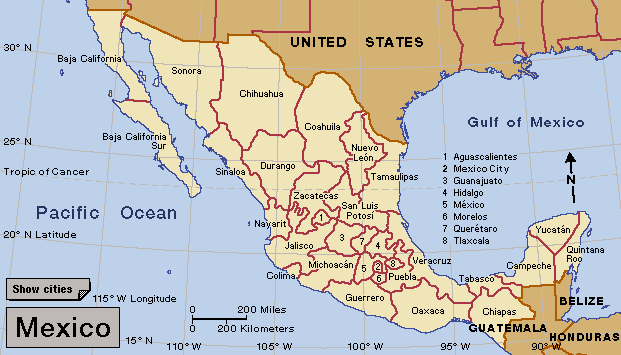Campeche, << kahm PAY chay, >> is a state in the Yucatán Peninsula in southeastern Mexico. It has an area of 19,619 square miles (50,812 square kilometers). Campeche lies on the Bay of Campeche, an arm of the Gulf of Mexico. It shares its southern border with the country of Guatemala and part of its eastern border with Belize. The state capital is also named Campeche.

At the time of the 2020 census, Campeche’s population was 928,363. Most of the people live in cities, including Campeche, Champoton, and Ciudad del Carmen. Much of the population is descended from the Maya Indians. The state has many ancient Maya ruins.
Campeche’s chief industries are lumbering and fishing. Dense tropical rain forest blankets most of the land. The Calakmul Biosphere Reserve, in southern Campeche, covers about 15 percent of the state. International scientists work at the reserve to find ways to improve the lives of the local people while protecting the rain forest from destruction.

The Spanish explorer Francisco Fernández de Córdoba made contact with the Indians of Campeche when he arrived in Mexico in 1517. Hernán Cortés, another Spanish explorer, encountered Campeche’s Indians in 1519. In 1540, Spanish immigrants settled the city of Campeche. The city became a busy port, and pirates frequently attacked it. In the 1600’s, the Spanish fortified the city with walls. Campeche became a Mexican state in 1863.
Tourists visit the city of Campeche to see its beautiful colonial buildings and its fortifications. In 1999, the United Nations Educational, Scientific and Cultural Organization (UNESCO) designated the city a World Heritage site. UNESCO considers such sites to be areas of unique natural or cultural importance.
